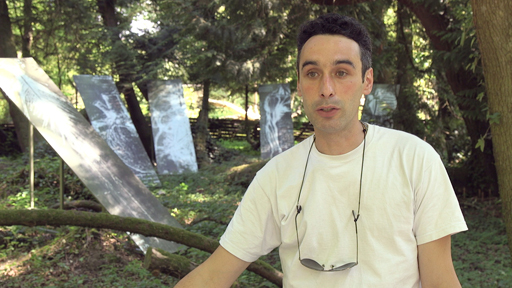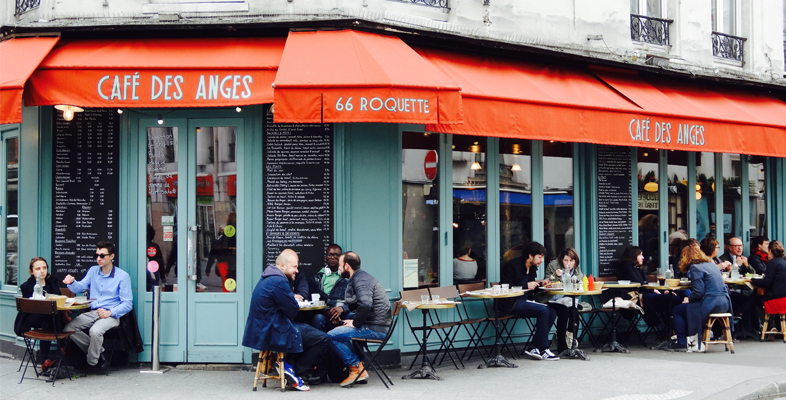3.1 Mohammed and talking about personality
Now you have prepared with visual clues, you are going to listen to Mohammed introducing himself and talking about his life.
Activity 8
Now watch the clip with the sound turned on to confirm your responses

Transcript
Activity 9
a.
affectueux
b.
amical
c.
de bonne humeur
d.
impatient
e.
lugubre
f.
malheureux
g.
ouvert
h.
poli
i.
serviable
j.
souriant
k.
travailleur
The correct answers are a, b, c, g, h, i, j and k.
Answer
From the visual clues, all of the above adjectives except ‘impatient’, ‘lugubre’ and ‘malheureux’ seem appropriate.
Activity 10
Watch the clip again, this time with the sound turned on. Do you hear any of the words from the list above?

Transcript
Answer
In fact Mohammed doesn’t use any of these words to describe himself. However, this exercise provides good practice in listening for particular words in an audio-visual extract.
Activity 11
Play the clip again and complete the following three phrases which you hear towards the end.
Use the transcript to check your answers

Transcript
Using the following two lists, match each numbered item with the correct letter.
j’aime bien rendre service.
a fait les Beaux Arts.
toucher à plein de choses dans la vie.
a.Je suis une personne qui
b.Mes amis diraient que
c.J’aime bien
- 1 = b
- 2 = a
- 3 = c
Activity 12
Now make up some phrases about yourself, using:
‘je suis’ plus one or more adjectives
‘mes amis diraient que j’aime bien’ plus a verb in the infinitive to say how your friends see you
‘je suis une personne qui’ plus a verb in the passé composé to say something you’ve done in the past
‘j’aime bien’ plus a verb in the infinitive to say how you see yourself
Discussion
Using visual clues can be an important strategy to help understand authentic spoken language. What we see will give us a great deal of information about the speaker and the context in which he/she is speaking; this in turn can help us to make sense of what we here. The words ‘jean’ (‘jeans’) and ‘gin’ (‘gin’) are both pronounced in the same way in French - [dӡin] – so if we heard the word pronounced in isolation we do not whether it refers to an item of clothing or an alcoholic drink. However, if we can see whether a spoken exchange is taking place in a clothes shop or a bar, then we know the purpose of the customer’s request when we hear ‘je voudrais un [dӡin]’.
Visual clues can also tell us a great deal about the speaker. In the clip featuring Mohammed, we were presented with a great deal of visual input about him, his family and his work. This helps us to interpret what we hear by providing assistance in decoding words and phrases, helping us to choose between similar sounding words and confirming the meaning of words or expressions whose sense we have tried to guess. The words ‘Maroc’, ‘marocain’ and ‘Casablanca’ all occur in the video extract. Being able to see Mohammed may confirm what we think we have heard.
Finally, visual clues may allow us to use cultural knowledge as a tool for listening comprehension. The foodstuffs we see on Mohammed’s market stall (olives, dried fruits, spices) are all associated with North-African cookery and the artefacts we see in his home are also typical of North Africa. We can use this cultural knowledge to confirm spoken information about Mohammed that we may have only partially understood by listening, just as cultural knowledge about the position of French in many Moroccan schools may confirm our understanding when Mohammed explains that, along with his brother and his sisters, he pursued his studies in France up to and including time at the prestigious École des Beaux Arts.
